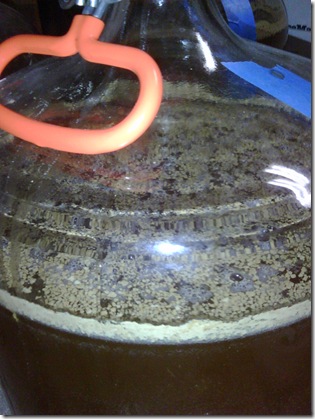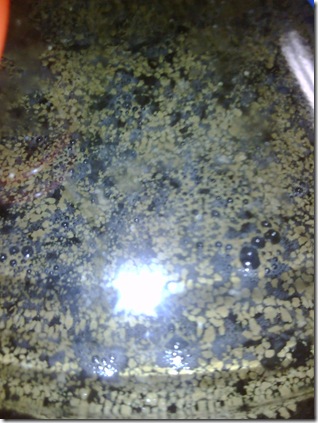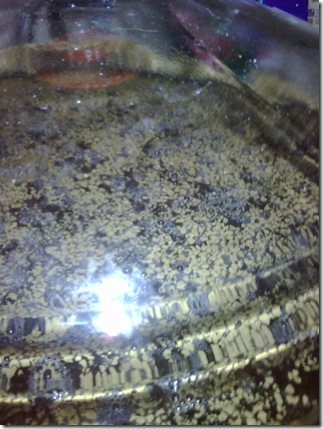At Christmas I tried a batch of beer I had made, luckily it was only a 1 gallon batch, and there was something terribly wrong with it. It tasted like water, but with a funky taste to it. I figured I must have had an infection in it. 
So now Im a little paranoid, and Im wondering if I did something wrong with my last batch of Centennial Blonde. It has these green floaty things on the top.
I made a 10 gallon batch, and split it between two carboys, and used a starter of a American Ale yeast in one, and a package of Nottingham yeast in the other. The American Ale yeast carboy has these green things across the entire carboy, and the nottingham yeast carboy only has a few of them, in a 4 inch circle.
I took a whiff of both carboys, and they smell fine to me. Im just a little concerned since I had the problem with that 1 gallon batch, and I was planning on putting a Stout on the yeast cake of the American Ale Carboy.
Am I being paranoid, or do I have a problem? I'm hoping it's just the krausen, and I know that the forum sees a whole lot of posts like this, so thanks for putting up wth me, and thanks in advance for any help
Here's some pictures to help with the diagnosis.
One:
 Link to full sized.
Link to full sized.
Two:
 Link to full sized
Link to full sized
Three:
 Link to full sized
Link to full sized
So now Im a little paranoid, and Im wondering if I did something wrong with my last batch of Centennial Blonde. It has these green floaty things on the top.
I made a 10 gallon batch, and split it between two carboys, and used a starter of a American Ale yeast in one, and a package of Nottingham yeast in the other. The American Ale yeast carboy has these green things across the entire carboy, and the nottingham yeast carboy only has a few of them, in a 4 inch circle.
I took a whiff of both carboys, and they smell fine to me. Im just a little concerned since I had the problem with that 1 gallon batch, and I was planning on putting a Stout on the yeast cake of the American Ale Carboy.
Am I being paranoid, or do I have a problem? I'm hoping it's just the krausen, and I know that the forum sees a whole lot of posts like this, so thanks for putting up wth me, and thanks in advance for any help
Here's some pictures to help with the diagnosis.
One:

Two:

Three:



